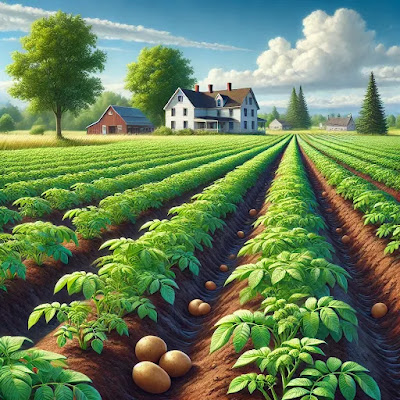Strawberry Production: A Global Overview
Strawberries are one of the most popular fruits in the world, and their production is a major industry in many countries.
 |
| Ripe Strawberries with white flowers (Source) |
According to the latest data from the Food and Agriculture Organization (FAO) Statistics, the top three countries in terms of strawberry production are China, the United States, and Egypt.
In 2023, China produced 3,336,690 tons of strawberries, followed by the United States with 1,055,963 tons and Egypt with 597,029 tons.
The global demand for strawberries continues to grow, and farmers are planting more acres of strawberries to meet this demand.
However, unpredictable weather patterns and catastrophic climate events have damaged and destroyed strawberry crops in some areas, causing demand to exceed supply.
In the United States, California is responsible for 90% of the strawberry crop, with Florida, Oregon, North Carolina, and Michigan producing the remaining 10%.
In Egypt, the regions of Ismailia, Beheira, and Qaluobia are the top producers of strawberries.
Strawberries are members of the Rose family and are known for their versatility and high nutrient content.
Just one serving of eight strawberries contains more vitamin C than one orange, and they also contain impressive amounts of other nutrients like potassium, manganese, iron, calcium, magnesium, folate, and other antioxidants.
How to Grow Strawberries
Here are the steps to grow strawberries:
1. Choose the right variety:
There are three types of strawberries: June-bearing, Everbearing, and Day-neutral.
June-bearing strawberries produce one large crop per year, while everbearing and day-neutral strawberries produce smaller crops throughout the growing season.
Choose the variety that best suits your needs.
2. Select the right site:
Strawberries need full sun and well-drained soil. Choose a site that gets at least six hours of direct sunlight per day.
3. Prepare the soil:
Add compost or well-rotted manure to the soil to improve drainage and fertility.
4. Plant the strawberries:
Plant strawberries in the Spring or Fall. Space the plants 12-18 inches apart in rows that are 3-4 feet apart.
5. Water the strawberries:
Water the plants regularly, especially during dry spells.
6. Fertilize the strawberries:
Fertilize the plants with a balanced fertilizer once a month during the growing season.
7. Mulch the strawberries:
Mulch the plants with straw or pine needles to help retain moisture and suppress weeds.
8. Protect the strawberries:
Cover the plants with netting to protect them from birds and other animals.
9. Harvest the strawberries:
Harvest the berries when they are fully ripe and red all over.
10. Renovate the strawberry bed:
After the harvest, remove the old leaves and runners from the plants to encourage new growth.
By following these steps, you can grow delicious and healthy strawberries in your own backyard!
How to Grow Strawberries from Seedlings
Most people who raise strawberries do not start them from seed.
They buy strawberry plants from a local nursery or a mail-order nursery.
They then receive, most often, dormant strawberry crowns that they quickly plant in their prepared beds, water them, and watch as the dormant strawberries spring forth into new life.
However, if you want to start your strawberries from seedlings, here's what you need to do:
1. Choose the right seeds:
You can buy strawberry seeds from a local nursery or online. Choose a variety that is suitable for your climate.
2. Prepare the soil:
Fill a seed tray with a seed-starting mix and moisten it with water.
3. Plant the seeds:
Plant the seeds about 1/4 inch deep in the soil. Cover the tray with plastic wrap to keep the soil moist.
4. Provide light:
Place the tray in a sunny location or under grow lights. Keep the soil moist.
5. Transplant the seedlings:
When the seedlings have grown their first true leaves, transplant them into larger pots or into the ground.
6. Care for the seedlings:
Water the seedlings regularly and fertilize them with a balanced fertilizer once a month.
7. Protect the seedlings:
Cover the seedlings with netting to protect them from birds and other animals.
8. Harvest the strawberries:
Harvest the berries when they are fully ripe and red all over.
Conclusion
Strawberry production is a major industry in many countries, and the global demand for strawberries continues to grow.
While unpredictable weather patterns and catastrophic climate events have damaged and destroyed strawberry crops in some areas, farmers are planting more acres of strawberries to meet the growing demand.
Strawberries are a versatile and nutrient-rich fruit that is enjoyed by people all over the world.

.png)

Comments
Post a Comment